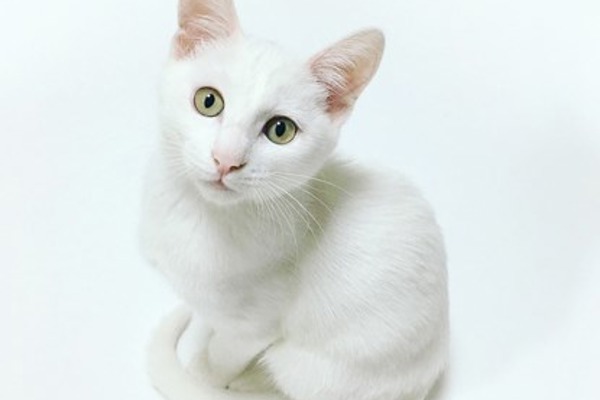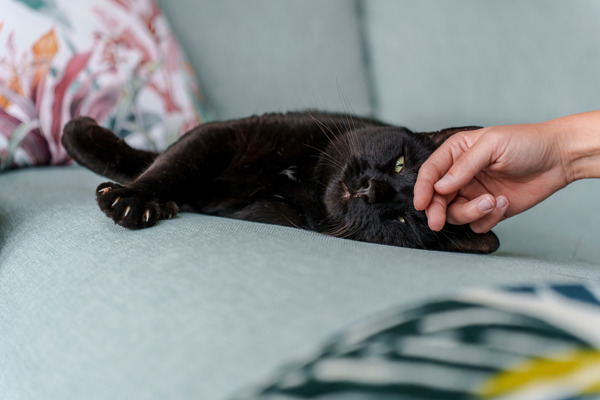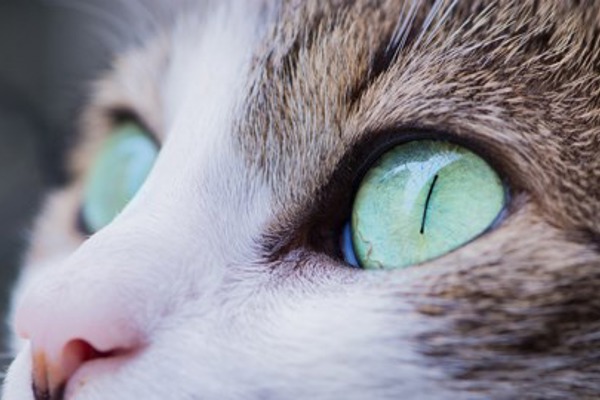Discover why cats need whiskers and why you should never trim cat whiskers
Cat whiskers are more than just cute facial features. They have several important functions that help cats understand the world around them. They help us to better understand them too.
What are cat whiskers for?
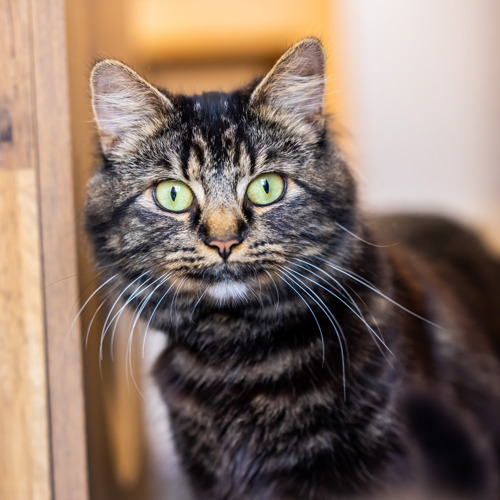
Cat whiskers are important sensory tools for cats. They help cats to sense objects up close, navigate in the dark and judge distance. They also communicate their mood.
Whiskers are more deeply embedded than normal cat hair. Each whisker connects to the muscular system so it can move. It also connects to the nervous system so it can send messages to the brain.
At the base of each whisker is a sensory organ known as a proprioceptor. This can detect any objects the whisker touches as well as vibrations in the air around it. Nerve endings at the base of the whisker send messages to the brain about what the whisker has detected.
- Sensing objects up close. Cats are mid-sighted. They struggle to focus their vision on objects that are closer than around 30 centimetres (12 inches) in front of them. To help them sense objects that are close by, they use their whiskers to detect objects and vibrations. This helps them to locate and catch prey, as well as avoid obstacles and any approaching danger.
- Navigating in the dark. Cats have good low-light vision. They are able to see around six times better than humans can in the dark. But they also get a bit of help from their whiskers. Detecting vibrations in the air helps them to hunt at dawn and dusk when their prey is most active. It also helps them navigate their way around at night without bumping into things. Find out more about cat eyesight.
- Judging distance. A cat’s whiskers are proportionate to the width of their body. They act as a measuring tape to help them judge whether a gap is big enough for them to fit through. If they stick their head into a gap and feel their whiskers touch the edges, they know it’s too narrow for their whole body to squeeze through.
- Telling which way is up. The proprioceptor sensors on cat whiskers can detect which way gravity is pulling on the whisker. They send messages to the brain about the position of the cat’s body and limbs in relation to the ground. This is part of the reason why cats are so good at landing on their feet when they fall.
- Protection. The position of whiskers near the eyes, nose and mouth help to protect these sensitive spots from danger and injury. If the whisker touches an object (even something as small as a speck of dust) the cat knows to move or shake their head, or blink their eyes, to keep it away.
- Communicating their mood. Cats don’t have a lot of facial muscles. It can be difficult to read their facial expressions to find out how they’re feeling. But one part of their face that can move to show their mood is their whiskers. If the whiskers are still and relaxed against the face, then the cat is likely feeling calm. If the whiskers are pushed forward, then they could be feeling curious or excited. If the whiskers are pushed back, then they might be feeling anxious or scared. Find out more about cat body language.
How many whiskers does a cat have?
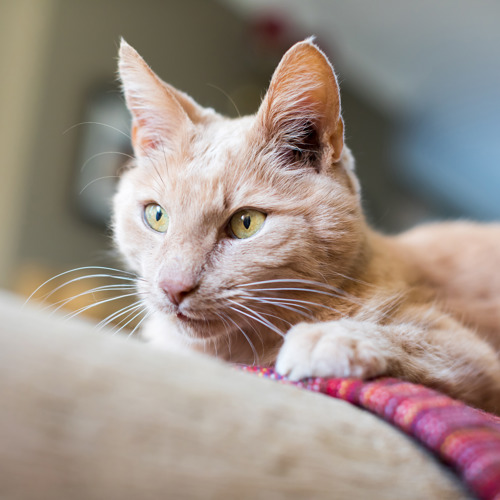
Most cats have 24 whiskers, with 12 whiskers on each cheek arranged in four horizontal rows of three. Cats always have an even number of whiskers, distributed symmetrically on each side of their face. This helps them measure what’s going on around them.
Do cat whiskers grow back?
It’s normal for one or two cat whiskers to fall out every so often. Whiskers do grow back as long as the follicle, where the whisker joins the face, isn’t damaged. Cats can shed their whiskers like they can shed their hair. This makes way for new, healthy whiskers to grow in their place.
Whiskers usually take between six weeks and three months to grow back. If your cat loses a lot of whiskers all at once or their whiskers are damaged or do not grow back, they could be unwell or injured. Get them checked by your vet to see if any treatment is needed.
Can you trim cat whiskers?
You should never trim, pluck or cut a cat’s whiskers. Even though cutting a cat’s whiskers is not particularly painful for them, and the whisker will grow back eventually, there is no benefit to cutting them. Whiskers are used for spatial awareness. Cutting them could leave your cat feeling disorientated or stressed until they have grown back.
What is whisker fatigue?
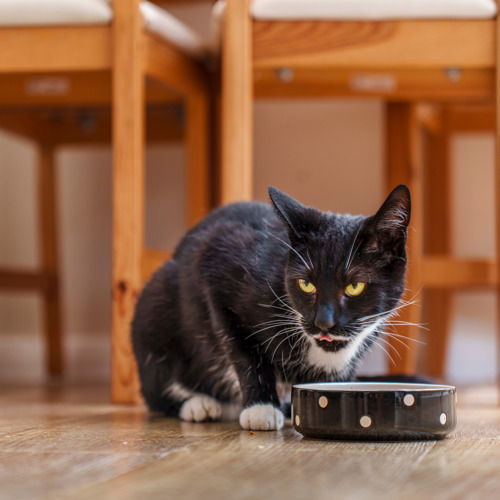
Cat whiskers are very sensitive. Every time they come into contact with an object or detect vibrations, they send messages to the brain. If pressure is placed on the whiskers for a long or repeated amount of time, they can become overstimulated. This can cause ‘whisker fatigue’. This usually occurs when cats are eating or drinking from bowls that are too small or deep, as their whiskers are continuously touching the sides. Cats prefer wide, shallow food and water bowls for this reason. Find out more about feeding and drinking.
It is ok to gently stroke your cat’s whiskers, as many cats like to be petted on their cheeks. But you should keep the petting brief and on your cat’s terms, to avoid whisker fatigue. Also never pull on their whiskers as you could damage them. Find out how to pet a cat.
7 facts about whiskers
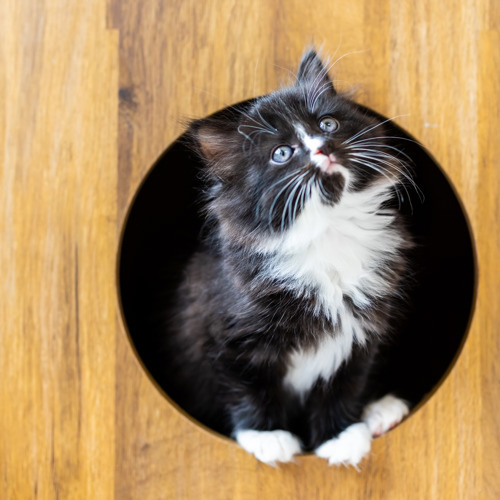
- Cat whiskers have a Latin name. The official name for cat whiskers is vibrissae. This comes from the Latin vibrio, meaning ‘to vibrate’, because they can sense vibrations.
- Whiskers are made from keratin. Keratin is the same protein that human and cat hair and nails/claws are made from. Whiskers are much longer and thicker than cat hair. But they are thinner and more flexible than their claws.
- Whisker length can vary. The length of cat whiskers varies as they are proportionate to the width of the cat’s body. But on average they are five to 10 centimetres (two to four inches) long. The Guinness World Record for the longest whisker on a cat was recorded in 2005 at 19 centimetres (7.5 inches) long. It belonged to Missi, a Maine Coon cat from Finland.
- Cats are born with whiskers. All kittens are born with short whiskers that grow as they get older. Kittens’ eyes and ears don’t open until they are around two weeks old. Their whiskers help them to sense what’s going on around them in their first couple of weeks of life.
- Whiskers are usually white. Most cat whiskers are white as the thicker hair does not usually retain melanin, the substance responsible for hair colour. But some cats do have black whiskers. As cats grow older the colour of their whiskers can sometimes change to grey or black. Much like our hair sometimes goes grey as we age. Other than this, there is no other way to tell how old a cat is by their whiskers.
- Whiskers aren’t just on the face. As well as having whiskers on their cheeks, many cats also have whiskers above their eyes, jawline and on the back of their front legs. All these whiskers serve the same purpose.
- Sphynx cats don’t have whiskers. The hairless breed of cat known as Sphynx do not have any fur, whiskers or eyelashes. They have to rely on their other senses, such as sight and smell, to do the job of whiskers.

